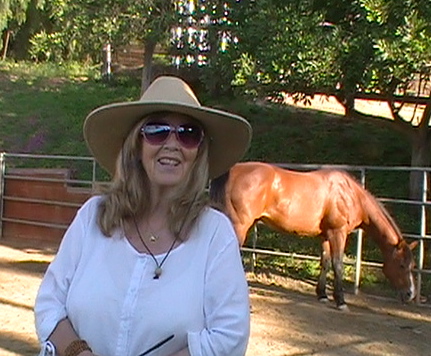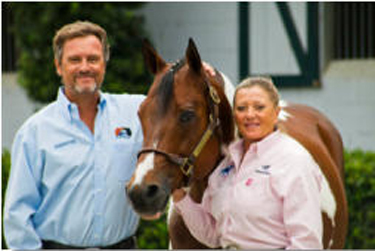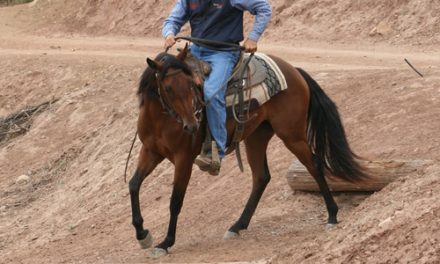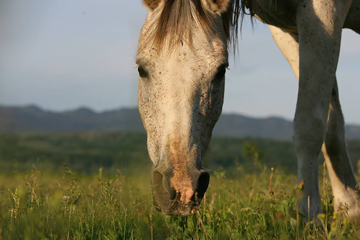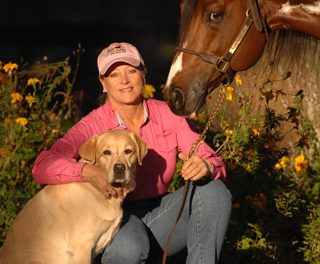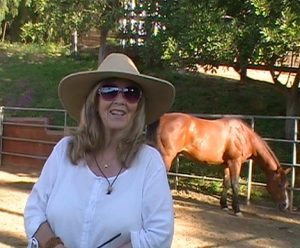 All of you who responded had such great answers in how to train Browny, my virtual horse that is so resistant. My blog is attracting kind, knowledgeable and effective horse people that appear to enjoy training for training sake alone.
All of you who responded had such great answers in how to train Browny, my virtual horse that is so resistant. My blog is attracting kind, knowledgeable and effective horse people that appear to enjoy training for training sake alone.
Most all of you felt that Browny was no challenge. If you are new to horses, I am sure you will have learned a lot from all these great responses. I want you to look at these solutions as a way to grow your understanding of horses and try out the solutions you would feel you could do on a horse like Brownie. From your success and failures, you will learn easily. Trial and error has always created great horse trainers. People who are not interested in training, and just want their horse to do what they ask him to do, will most likely get frustrated and will often approach the training of a resistant horse with resistance, aggression and asking too much, creating the horse to get worse. What I want to show you here is a video of how badly horses can be approached when in a hurry and full of arrogance.
What I am offering in my programs is the concept that training is fun no matter the result and that the challenges are rewarding. The act of training a horse should not be something that brings out the dragon in you. What I can tell you is that any horse that has a big No in him, has just as much willingness (though sometimes it doesn’t look like it), because it is the nature of horses to be willing. In my life, I have found that the most difficult horses to train were all fixed from Sharing Territory. These horses have attracted me for years as I felt that working with difficult horses would lead me to a greater understanding of them.
I learned how to train horses like Brownie when I was a child and did not have a lot under my belt in the ways of dealing with a bully resistance nature. What I knew as a child – was how to pause, coax, change direction, wiggle a rope, and how to pull a horse to the side to move his feet. All of this did not work for me with extreme horses. If I insisted with certain horses, they would bolt. I would then need to let go or get a nice rope burn. Loving, petting and treats did not work and food caused forward aggression where Brownie types would knock me down.
I do not think I offered enough details on Browny’s behavior in my last blog to you. Brownie will balk, bolt and crowd. When you get near, he will stiffen and will not back or bend his legs or neck. If you get on him, he will buck. What I wanted you to experience is that your virtual horse would challenge you to a point where you would start out knowing that you have no answers. Over the years, I personally have had to work with horses in this fashion and it was good for me – it improved my leadership. What worked best for me was not to try anything with them because these horses had too much no in them. So my solution is not to try and do anything with them but to get to know the horse in the most natural way by Sharing Territory with them. This way a trust and bond has a chance to develop. From the bond and trust, a natural willingness has a chance to bubble up. If you have a certain kind of leadership behavior, these kinds of horses can be turned around without having to get into a battle of wills with him. For horse training it helps to have a strong will or presence in you because horses respond positively to this kind of energy as long as you do not act willful in moments that the horse is resistance.
Horses are such great teachers for us for developing intelligent behavior and compassionate leadership. My interests in developing a virtual horse challenge for my students is to bring you fully present to the moment and to look deeply into this horse that you have no answers for. I want you to work in a spontaneous way so you may become comfortable with a horse when you may not have any answers. This is where true horsemanship takes place, where you meet in the middle so you can give a horse a chance to listen to his instincts, which will open up his social behavior. I want your virtual horse to bring you to the idea that you may not be able to fix him. This way, the horse will get a chance to see your arrogance melt way, which will help him to give up his resistance. To stay on this journey of not knowing where the solution will come from will grow your leadership conduct. The trick is to find out where your horse wants to go so you can lead him there and then build up your horse’s trust so you can lead him anywhere.
The only thing I can offer to my class is that Sharing Territory has magic in it because of the bond that forms – especially for extreme horses such as Brownie. After a bond is formed from being together doing nothing you will know better in how to approach him in getting him to follow your lead. After that, your job is to ask for more performance in a way that would cause Brownie not to return to a place of resistance and old conduct. Then you can work on your horse accepting stronger leadership direction until he likes to be ordered around and finds it fun like a sheep dog taking directions for his master. It is a step-by-step process that Brownie leads the way in how you go about training him to a magical performance.
“Horses like Browny have small windows of acceptance. If you exhibit weakness, they will become more aggressive. If you are too strong, they will offer stronger resistance. As they test your leadership, you will search to find the greatest integrity you have to offer them.”
Christina Ring!!!
I liked how direct and entertaining Christina’s answer was and the wording she choose. The words one chooses to use can reveal much about a person’s leadership ability. I could see that Christina is a natural care-taking leader. I liked how Christina knows that a name is important and environment is the key. I believe provenance put Brownie in the trailer for her because of the energy Christina brought to the table and her setting up a circumstance that would make it easy for Brownie to want to get into a trailer. Christina understood how careful and direct you need to be with a horse such as Brownie and she understood the power of the non-action journey would bring Brownie around so again provenance, time, and coming from the heart had a chance to play a part in Brownies change of attitude. I think from the words she chose that Christina knows full well of the tight rope that needed to be walked with an extreme horse.
Here is Christina’s response –
The previous owners said, Brownie the balking mule had the balking in his bones. I bought him anyway, and changed his name to “Brownie Willing Foot, the clever Sire”. I told everyone about my new, big, smart horse. I also told Brownie about his new name and I gave him time to feel into it. Brownie used to live in a box, so I found him a nice paddock paradise where he could show off in the field and be admired. Miraculously, he didn´t refuse to walk in the trailer, maybe he was keen to see his new home and we also took one of his horse friends along on the trip.I gave Brownie some weeks to settle in, spent time with him, and didn´t ask much. I can groom him in the field, so I didn´t have to find a rope that was sturdy enough to hold against his weight. He liked it. I did not have to lead him anywhere for some time, and when we decided to go on a walk, there was no problem anymore. The balking mule stayed at his old barn. Long live Willing Foot! ~ Christina Ring
Have a great weekend and watch out for new horse and human sightings,
warmly,
Carolyn
http://www.carolynresnickblog.com

